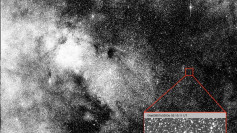Astronomers are closely monitoring the interstellar object 3I/ATLAS after new observations indicated that it partially disintegrated following its close approach to the Sun, raising questions about its composition and origin. The object, officially designated C/2025 N1 (ATLAS), is only the third confirmed interstellar visitor observed in the Solar System and has exhibited behavior unlike any previously recorded.
3I/ATLAS was first identified on July 1, 2025, by the Asteroid Terrestrial-impact Last Alert System in Chile. Its hyperbolic trajectory confirms that it does not originate from the Solar System and will eventually exit back into interstellar space. The object passed its perihelion on October 29, 2025, at approximately 1.36 astronomical units from the Sun and is expected to pass 1.8 AU from Earth on December 19, posing no threat.
However, shortly after its solar encounter, telescopes detected a 13% reduction in the object's visible size. Most comets heat and release bright, extended tails when exposed to intense solar radiation. In contrast, 3I/ATLAS retained a compact glowing structure, displaying what observers described as a sunward-facing jet instead of the typical dust plume streaming away from the Sun.
Researchers noted that the object's shrinkage, lack of a visible debris field, and structural change may indicate volatile surface collapse or internal fragmentation. Some specialists characterized its behavior as "beyond standard cometary models."
Further complexity emerged from infrared spectroscopy data collected by the James Webb Space Telescope. The analysis revealed a CO₂-dominated coma with measurable traces of H₂O, CO, OCS, water ice, and dust, with a CO₂/H₂O ratio measured at over four standard deviations above typical Solar System comet compositions. The spectral results, combined with a shift from reddish to bluish surface tones and a deep negative polarization branch, suggest 3I/ATLAS formed in an extremely cold region capable of preserving volatile ices for billions of years.
The object's activity patterns have also drawn attention. Observers documented at least seven active jets emanating from the surface, with some directed toward the Sun. The jets appeared to cause slight non-gravitational accelerations in the object's trajectory. Astrophysicist Avi Loeb remarked that the symmetrical configuration of the jets could resemble a "thruster-like system," though mainstream astronomers attribute the effect to uneven outgassing as sunlight warms volatile materials.
3I/ATLAS is continuing its outbound path beyond the orbit of Mars and is expected to fade as it recedes. NASA, the European Space Agency, and international observatories are continuing to monitor brightness fluctuations and potential structural fragmentation.



